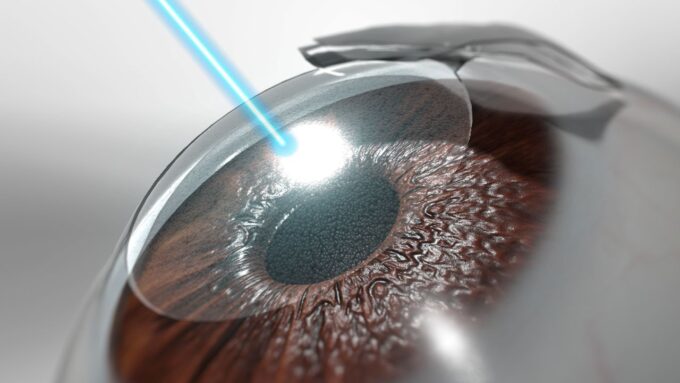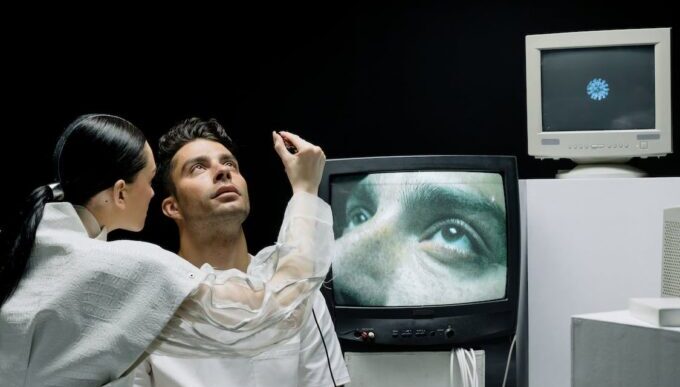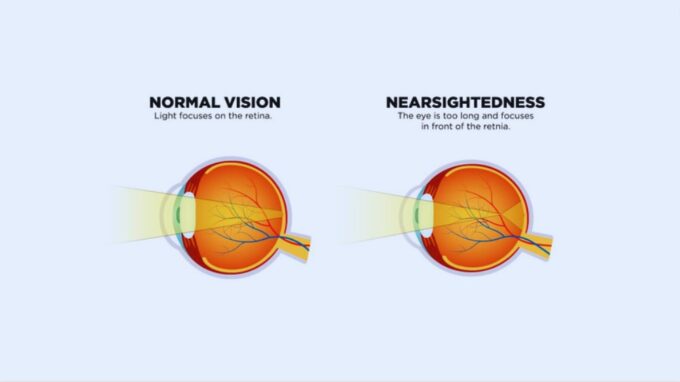Picture this: you wake up in the morning, stretch out your arms, and open your eyes to a brand-new day. The world around you is crisp, vibrant, and crystal clear. There’s no frantic search for your glasses on the nightstand or fussing with fiddly contact lenses. Your vision is perfect, and life feels like a movie in high definition. Is this just a dream? Not anymore!
Welcome to the transformative world of eye surgery, where myths and misconceptions have loomed like shadows, obscuring the brilliance of this revolutionary procedure. But fear not, as we embark on an enlightening journey together, we’ll shine a brilliant light on LASIK, dispelling those shadows, and revealing the remarkable truth. Have you ever wondered if LASIK is a painful, risky, or fleeting solution?
Perhaps you’ve heard whispers about age restrictions or concerns about night vision problems. Well, it’s time to put those doubts to rest and uncover the real magic behind it. You can find out more about this type of eye surgery at northamericanlasik.com
In this article, we’re breaking down barriers and defogging misconceptions with clarity and creativity. Get ready to witness the wonders of LASIK and embrace the freedom of clear vision without the burdens of glasses or contacts.
Let’s debunk myths, reveal the facts, and explore the extraordinary world of LASIK eye surgery! So, fasten your seatbelt and prepare to experience the world like never before – with LASIK, the vision is remarkably crystal clear, and the future is bright!
Myth 1:

Source: ucihealth.org
LASIK is Painful.
Truth:
The idea of a laser near your eyes might sound alarming, but rest assured, it is not painful. Before the procedure begins, the eye is anesthetized with specialized eye drops, ensuring a virtually painless experience for the patient.
During the surgery, the laser used is precise and efficient, causing only a slight sensation of pressure. Most patients report minimal discomfort during and after the procedure, with any lingering sensations usually subsiding within a few hours.
Myth 2:
LASIK is Unsafe and Risky.
Truth:
It is a safe and FDA-approved procedure, with a success rate of over 95%. Similar to all medical procedures, LASIK surgery carries potential risks that patients need to be aware of before making a decision.
That said, modern advancements in technology and screening processes have significantly reduced the likelihood of complications. Achieving a successful outcome largely depends on three essential factors: selecting a reputable and experienced surgeon, adhering diligently to pre and post-operative instructions, and maintaining realistic expectations throughout the whole process.
Myth 3:

Source: allaboutvision.com
LASIK is only for young people.
Truth:
While LASIK is popular among young adults, there is no specific age limit for the procedure. Candidates must have a stable vision for at least one year and meet other health requirements. As long as your eyes are healthy, and you meet the criteria, LASIK can be performed effectively on individuals of various ages.
Myth 4:
LASIK outcomes can experience changes over time.
Truth:
It provides a long-term solution to vision problems by permanently reshaping the cornea to effectively correct refractive errors. While age-related vision changes may occur over time, it’s effects do not wear off, and any regression is typically minimal and can be addressed with enhancement procedures if needed.
Myth 5:

Source: tosee2020.net
LASIK inevitably leads to permanent night vision problems.
Truth:
In the past, there were some reports of night vision disturbances following LASIK. However, advancements in technology and techniques have greatly minimized these issues.
The majority of patients experience improved night vision after LASIK, especially when compared to their pre-surgery vision with glasses or contact lenses.
Myth 6:
LASIK is expensive and not covered by insurance.
Truth:
While LASIK can appear as a significant upfront investment, it’s crucial to consider the substantial long-term savings on glasses, contact lenses, and associated eye-care costs. Additionally, some insurance plans and flexible spending accounts may offer partial coverage for LASIK.
Myth 7:

Source: pexels.com
Anyone can get LASIK.
Truth:
While LASIK is a remarkable procedure, not everyone is a suitable candidate. Individuals with certain eye conditions, severe refractive errors, or unstable vision may not be eligible for LASIK. To determine if it is suitable for you, it is essential to undergo a comprehensive eye examination and consult with a qualified eye surgeon.
Myth 8:
LASIK carries a rare risk of blindness.
Truth:
Perhaps one of the most alarming myths about LASIK is the belief that it can lead to permanent vision loss. On the contrary, LASIK is designed to improve vision and has a remarkable success rate.
The main objective of LASIK is to reshape the cornea, effectively addressing common refractive errors. Serious vision loss from LASIK is an exceedingly rare occurrence, and the majority of patients achieve significantly improved vision.
Myth 9:

Source: laserlasiksurgery.com
LASIK is only for correcting nearsightedness.
Truth:
LASIK is a versatile procedure that can correct various refractive errors, including nearsightedness, farsightedness, and astigmatism. Advancements in LASIK technology have expanded its capabilities, making it a viable option for a broader range of vision problems.
Myth 10:
LASIK recovery is lengthy.
Truth:
LASIK recovery is relatively quick. The majority of patients notice improved vision within just 24 to 48 hours after undergoing the LASIK procedure. However, complete stabilization of vision might take a few weeks. During the initial healing period, patients are typically advised to refrain from engaging in strenuous activities and avoid rubbing their eyes to ensure proper recovery.
Myth 11:
LASIK leads to permanent dry eyes in all patients.

Source: thehealthsite.com
Truth:
Temporary dry eyes are a common and expected side effect after LASIK surgery. However, advancements in LASIK techniques and the use of specialized eye drops have significantly reduced the risk and severity of dry eye symptoms.
For the vast majority of patients, any dryness experienced after it is short-lived and typically resolves within a few weeks. The surgeon will guide how to manage and alleviate dry eye symptoms during the healing process.
Conclusion
As we bid farewell to the myths and misconceptions surrounding LASIK, let’s embrace accurate information and understanding: it’s a safe, painless, and life-changing procedure. No longer must we fear blindness or temporary results, as it targets the cornea, leaving our precious retinas untouched and our vision enhanced.
So let’s debunk the notion that it is only for the young; age is just a number when it comes to reclaiming clear sight. As we step into the future, the gift of LASIK awaits individuals from all walks of life, ready to reveal a world of sharp details and vibrant colors.
Although some may hesitate at the initial cost, remember that this investment leads to a lifetime of freedom from eyewear expenses. It’s a journey worth taking, a chance to bid farewell to blurry days and welcome a future filled with visual clarity. In this colorful tapestry of life, LASIK stitches together a story of hope, courage, and transformation.
For individuals experiencing blurry vision, consider reading our article on how to improve vision without glasses. Gain insights into potential solutions, including surgical options, to make informed decisions about your vision care.







